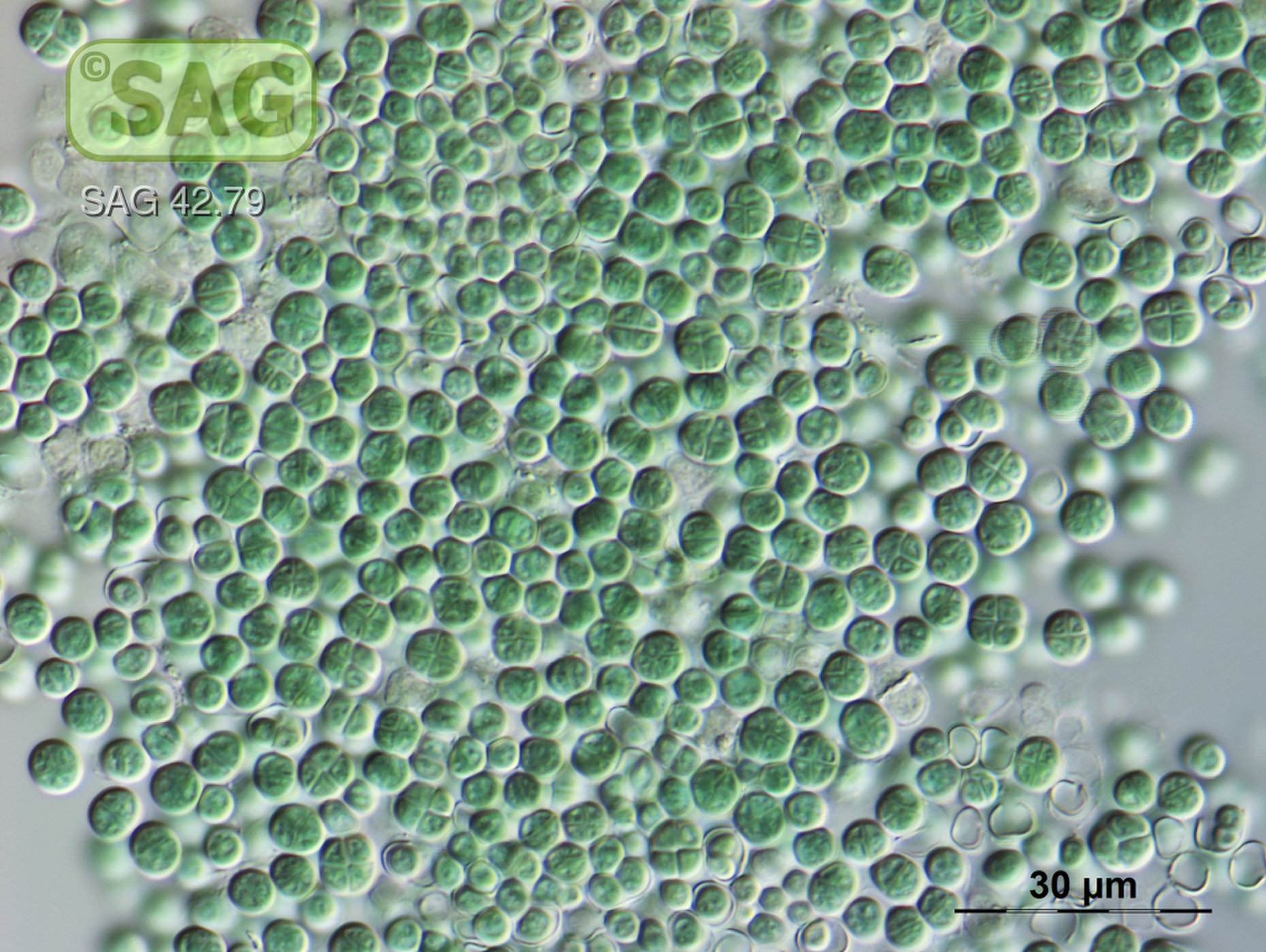Chroococcidiopsis on:
[Wikipedia]
[Google]
[Amazon]
 ''Chroococcidiopsis'' is a
''Chroococcidiopsis'' is a
''Chroococcidiopsis''
 ''Chroococcidiopsis'' is a
''Chroococcidiopsis'' is a photosynthetic
Photosynthesis is a process used by plants and other organisms to convert light energy into chemical energy that, through cellular respiration, can later be released to fuel the organism's activities. Some of this chemical energy is stored in c ...
, coccoidal bacterium
Bacteria (; singular: bacterium) are ubiquitous, mostly free-living organisms often consisting of one biological cell. They constitute a large domain of prokaryotic microorganisms. Typically a few micrometres in length, bacteria were among ...
. A diversity of species and cultures exist within the genus, with a diversity of phenotypes. Some extremophile
An extremophile (from Latin ' meaning "extreme" and Greek ' () meaning "love") is an organism that is able to live (or in some cases thrive) in extreme environments, i.e. environments that make survival challenging such as due to extreme temper ...
members of the order Chroococidiopsidales are known for their ability to survive harsh environmental conditions, including both high and low temperatures, ionizing radiation
Ionizing radiation (or ionising radiation), including nuclear radiation, consists of subatomic particles or electromagnetic waves that have sufficient energy to ionize atoms or molecules by detaching electrons from them. Some particles can travel ...
, and high salinity.
Desiccation resistance
The ability of ''Chroococcidiopsis'' to resistdesiccation
Desiccation () is the state of extreme dryness, or the process of extreme drying. A desiccant is a hygroscopic (attracts and holds water) substance that induces or sustains such a state in its local vicinity in a moderately sealed container.
...
in arid environments is due in part because it colonizes the underside of translucent rocks. The underside of these rocks provides enough condensed moisture for growth while the rock's translucent nature allows just enough light to reach the organism for photosynthesis to occur.
Mars colonization
Due to its resistance to harsh environmental conditions, especially low temperature, low moisture, and radiation tolerance, ''Chroococcidiopsis'' has been thought of as an organism capable of living onMars
Mars is the fourth planet from the Sun and the second-smallest planet in the Solar System, only being larger than Mercury (planet), Mercury. In the English language, Mars is named for the Mars (mythology), Roman god of war. Mars is a terr ...
. Scientists have speculated about the possibility of introducing ''Chroococcidiopsis'' to the Martian environment to aid in the formation of an aerobic environment. In addition to oxygen production, ''Chroococcidiopsis'' could aid in the formation of soil on the Martian surface. On Earth, soil is formed by plant, microbial, and geophysical activity on a mineral substrate. The soil produced by chemical weathering of rocks and oxygen produced by photosynthesis could one day provide the conditions necessary for humans to grow food on Mars, possibly allowing for permanent human civilizations on the planet. On a shorter time scale, cyanobacteria such as ''Chroococcidiopsis'' could be used in closed systems to produce resources for human-occupied outposts on Mars without altering the planet's surface or atmosphere.
A space mission called EXPOSE-R2 was launched on 24 July 2014 aboard the Russian Progress M-24M, and was attached on 18 August 2014 outside the ISS on the Russian module Zvezda. The experiment included samples of ''Chroococcidiopsis'' that were exposed to simulated Martian atmosphere, UVC radiation and temperature extremes. In 2022, the findings of the experiments were published.
UV and desiccation resistance
Biofilm
A biofilm comprises any syntrophic consortium of microorganisms in which cells stick to each other and often also to a surface. These adherent cells become embedded within a slimy extracellular matrix that is composed of extracellular ...
s of ''Chroococcidiopsis'' were exposed to Mars-like UV-flux and desiccation
Desiccation () is the state of extreme dryness, or the process of extreme drying. A desiccant is a hygroscopic (attracts and holds water) substance that induces or sustains such a state in its local vicinity in a moderately sealed container.
...
for up to seven years. Biofilms that were either (1) dried or (2) both dried and UV irradiated were able to recover. When these biofilms were rewetted the nucleotide excision repair
Nucleotide excision repair is a DNA repair mechanism. DNA damage occurs constantly because of chemicals (e.g. intercalating agents), radiation and other mutagens. Three excision repair pathways exist to repair single stranded DNA damage: Nucle ...
genes encoding UvrA, UvrB and UvrC were over-expressed. This suggests that nucleotide excision repair
Nucleotide excision repair is a DNA repair mechanism. DNA damage occurs constantly because of chemicals (e.g. intercalating agents), radiation and other mutagens. Three excision repair pathways exist to repair single stranded DNA damage: Nucle ...
of accumulated DNA damage
DNA repair is a collection of processes by which a cell identifies and corrects damage to the DNA molecules that encode its genome. In human cells, both normal metabolic activities and environmental factors such as radiation can cause DNA da ...
s contributed to the recovery.
See also
* ''Deinococcus radiodurans
''Deinococcus radiodurans'' is an extremophilic bacterium and one of the most radiation-resistant organisms known. It can survive cold, dehydration, vacuum, and acid, and therefore is known as a polyextremophile. It has been listed as the world ...
''
References
External links
''Chroococcidiopsis''
AlgaeBase
AlgaeBase is a global species database of information on all groups of algae, both marine and freshwater, as well as sea-grass.
History
AlgaeBase began in March 1996, founded by Michael Guiry. Text was copied from this source, which is avai ...
{{Taxonbar, from=Q1088359
Cyanobacteria
Cyanobacteria genera
Space-flown life
Extremophiles